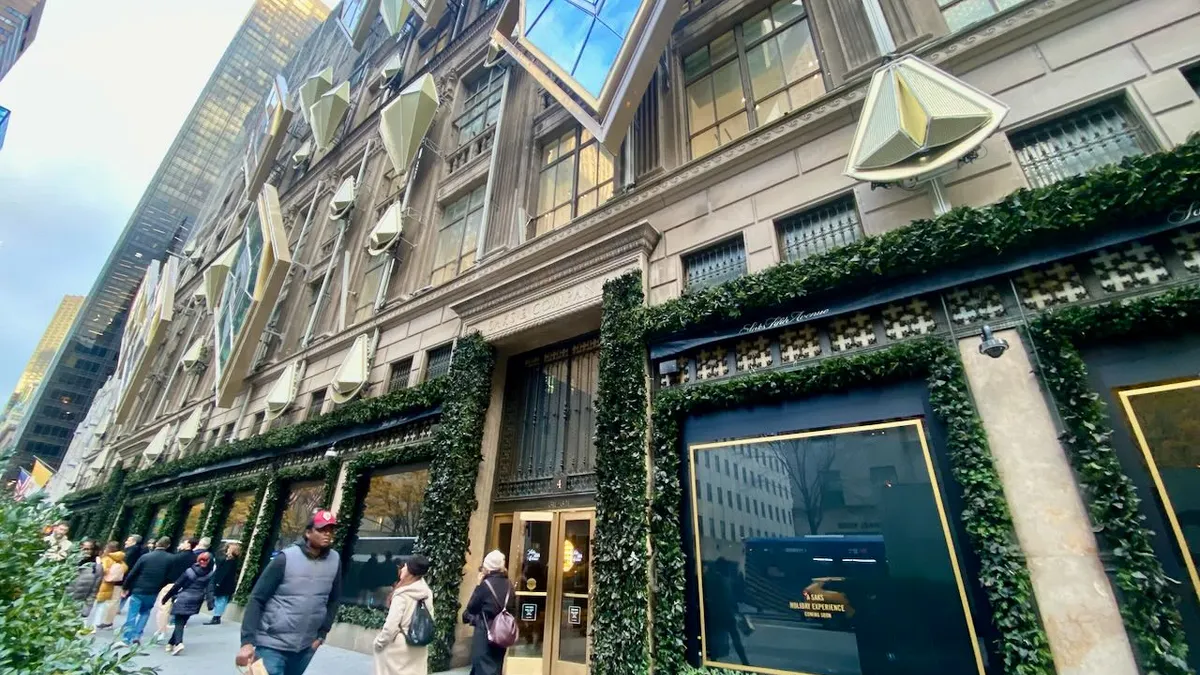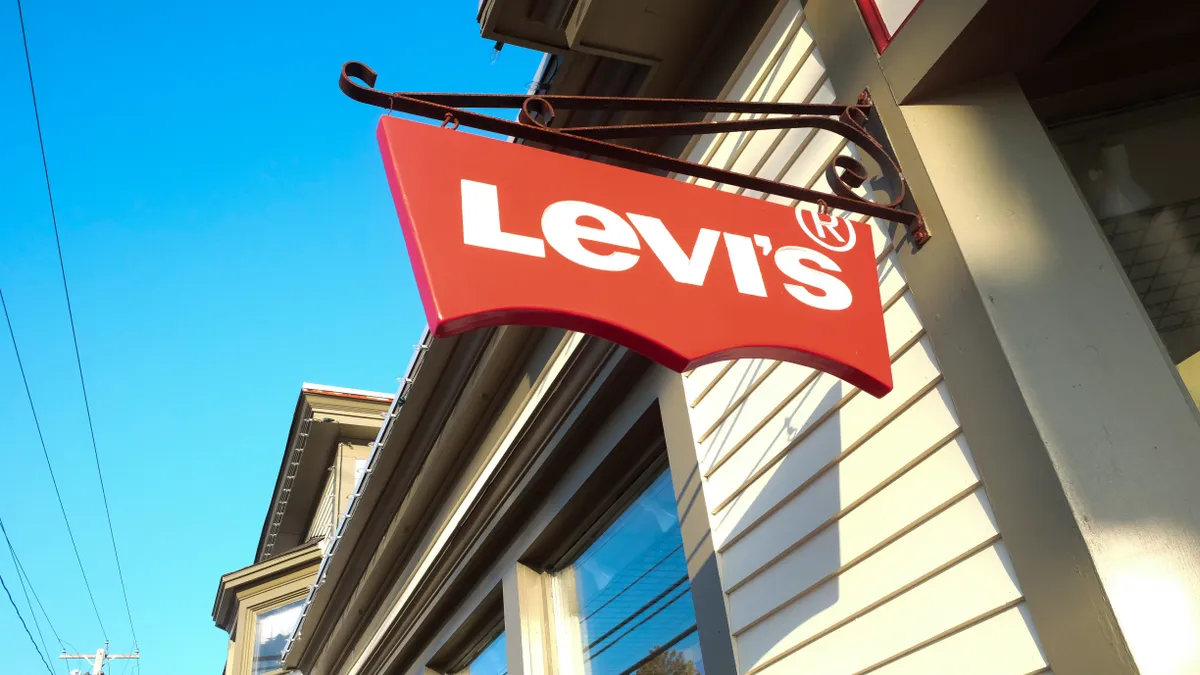Nordstrom began the year with high hopes.
With the October grand opening of its first full-line store in Manhattan, which took more than $500 million in investment capital to build out, the retailer fully realized its concept of a coordinated ecosystem, including its off-price Rack stores, its new Local stores and a men's store across the street from the flagship on West 57th Street and Broadway. All that plus their other Rack and full-line stores in the wider Tri-State area would help tap the $700 million-plus market.
The ecosystem, what the company calls its "market strategy," includes e-commerce. New York is its largest e-commerce market, making the play a good fit there, but it was yielding fruit beyond New York. In the fourth quarter order pickup sales generally were up more than 100%, contributing more than half of Nordstrom's full-price e-commerce growth. In the five markets where Local operates, order pickup sales grew 160%, CEO Erik Nordstrom told analysts.
"2020 is about scaling our market strategy in ten of our top markets, which represent more than half of our sales," he said, according to a transcript from Motley Fool.
An unusual time
As it turns out, that's not what 2020 is about.
By some time in March, e-commerce was all that was running, as the COVID-19 pandemic forced nonessential retailers to lock their doors in an effort to step the disease from spreading. At the end of May Nordstrom reported that first-quarter sales plummeted — 36% at the full-line banner and 45% at Rack, with e-commerce edging up just 5%. Taking after-tax COVID-related charges of $173 million, the company swung to a loss exceeding half a billion dollars, from net earnings of $37 million the year before.
Still, Erik Nordstrom insisted then that the market strategy, and this year's goal of expanding it from five markets to 10, remain in place, even as he pleaded for some patience regarding analysts' expectations during "such an unusual time."
How long the unusual time will last is anybody's guess. It's become generally accepted that the pandemic has sped up already emerging trends like the rise of e-commerce and the decline of malls. Less clear is how the pandemic will change consumer habits and thus retail strategy, including where to run stores. Nordstrom's New York City flagship may have seemed promising and well thought out, but the tourists and office workers that were likely to flock to it have disappeared from the city's streets. It's "too soon to tell" when or whether they return, or in what numbers if they do, according to BMO Capital Markets Managing Director Simeon Siegel.
"What we know with certainty with the pandemic is that we don’t know," Siegel said. "The prior rules of retail placement simply no longer exist."
Neiman Marcus is another department store that saw promise in establishing a location in New York for the first time — the company otherwise runs Bergdorf Goodman in town. But that retailer, now in bankruptcy court, has already abandoned the idea, pulling up stakes from the new Hudson Yards development on the West Side barely a year after opening it.
Along with the closure of Barney's last year, that may help Nordstrom, according to Credit Suisse analyst Michael Binetti. "There’s potentially a silver lining with Neiman's and Barney's gone, but that's probably pretty far off," Binetti said in an interview, adding that Nordstrom may be forced to take an impairment write-off on its new store, even though it's still in its early days.
One placement Nordstrom has appeared to have soured on, at least to some extent, is the mall. In May Erik Nordstrom noted that last year the company's U.S. mall-based full-line stores delivered 38% of its sales, with off-price and e-commerce together accounting for nearly 60%. This year the company announced the closure of 16 full-line stores for good, most in smaller markets that have access to nearby stores, including one in New Jersey.
But that leaves most of their footprint still ensconced at malls. Their full-line stores in general remain at risk, according to Jane Hali, CEO of investment research firm Jane Hali & Associates, who noted in an email that positive comp sales at those stores (which the company no longer officially reports) have become "a rarity."
"Things have changed," Hali said. "A full-line store in NYC where many are frightened of going indoors? Smaller stores are a better bet because you can keep track of how many people can safely be in the store. Their full price stores are also in malls which has become a doomsday scenario. The full line stores haven’t had positive comps for a while. I don’t see how this can turnaround."
Are the strengths strong enough?
Among department stores, which were flailing even before the pandemic hit, Nordstrom is widely seen as having the best chance of survival, thanks to its early adoption of e-commerce, a robust off-price operation and a superior shopping experience in their stores.
But as Morgan Stanley analysts note, Nordstrom is not immune to the challenges besetting department stores, including the new ones ushered in by the disease outbreak.
Siegel calls Nordstrom "the original e-commerce player" in the segment — the company years ago extended its famous customer service online by making both delivery and returns free, and its Rack business is the only off-pricer with meaningful e-commerce, he noted. The early entry allowed it to grow its digital penetration from 7.6% of sales in 2010 to nearly a third last year, or about 9 points more than average among softlines retailers, according to a June 1 note from Morgan Stanley analysts led by Kimberly Greenberger.
The pandemic forced some new omnichannel options, beyond what's envisioned in the market strategy. For example, the company said that Rack stores began fulfilling online orders for the first time in mid-April. Hali believes e-commerce will continue to be a growth vehicle at Nordstrom. But margins are destined to suffer as the channel picks up more sales, by Morgan Stanley's measure.
"The most recent buzzword in retail has been 'experiential.' The risk factor now is that experiences in stores are exactly what people are concerned about."

Simeon Siegel
BMO Capital Markets Managing Director
Rack, however, isn't a member of the stalwart TJX-Ross-Burlington off-price trifecta, according to Binetti. That can be seen through its flat sales last year, when TJX (parent of Marshalls and TJ Maxx) and Ross both gained 7%, according to a recent Credit Suisse note. Boosting its beauty and home goods offering, both areas that bring customers and sales to other off-price stores, could correct that to some extent, according to Hali.
Then again, while Erik Nordstrom has said that 30% of Rack customers also shop full-price, growing the off-price business could risk taking share from its flagship business, Binetti warned.
Then there's Nordstrom's great differentiation, its store experience. That encompasses its merchandising, with curated items at various price levels and exclusives from top designers; its top-notch customer service and a range of elevated services like styling and tailoring; and food and beverage options that are especially prevalent in the New York flagship — including a full-service bar in the shoe department.
Nordstrom has worked hard to pull that thread into its online experience, too. If one of the challenges of e-commerce is to stoke discovery and create an emotional connection with the customer, Nordstrom has arguably tackled that through its Local strategy. Local, which was named Retail Dive's Store Concept of the Year in 2019, is designed in part to nurture Nordstrom's relationship with customers online by allowing them to try on, return or tailor digital orders across banners, and in January the location on the Upper East Side already seemed like a neighborhood fixture.
In other words, touchpoints that remind anyone shopping online how Nordstrom is a great place to be in real life. Trouble is, "high-touch" has become problematic.
"The most recent buzzword in retail has been 'experiential,'" Siegel said. "The risk factor now is that experiences in stores are exactly what people are concerned about."
Full steam ahead
While Nordstrom's Local stores and its whole market strategy are fairly new, its determination to innovate is not. In recent years the company has partnered with and invested in several cutting edge concepts and brands, including a partnership with Rent the Runway, acquisitions of HauteLook and Stitch Fix-like Trunk Club, and investments in Bonobos and Shoes of Prey (a 10-year-old digitally native shoe brand that shut down last year).
That has not saved it from the kind of financial worries besetting all department stores. "They really have endeavored to have beautiful things that excited consumers, they just haven’t landed on economic returns to the shareholder," Binetti said. "There are a lot of things they do for their customers where the economics haven’t panned out. We need innovators out there trying things, but when the market changes on you abruptly, you’ll be challenged."
The retailer rang the alarm bells in April, noting in a filing with the Securities and Exchange Commission that the pandemic could heighten existing risks including those related to its "high level of indebtedness." In addition to closing 19 stores (including three Jeffrey specialty stores) the company earlier this month told landlords it would withhold half its rent for the rest of the year and began laying off 20% of its corporate workforce.
That doesn't mean that Nordstrom's Local market strategy is in jeopardy. On the contrary, the challenges only reinforce the need for it, a Nordstrom spokesperson told Retail Dive earlier this month.
"COVID-19 has had a very real impact on Nordstrom, accelerating the importance of our market strategy and capabilities we've invested in for years," the spokesperson said. "Our new operating model helps us serve customers across our business as one company, while enabling us to be more agile and flexible. We'll continue to invest in critical capabilities across technology, data analytics and supply chain to deliver for our customers."























